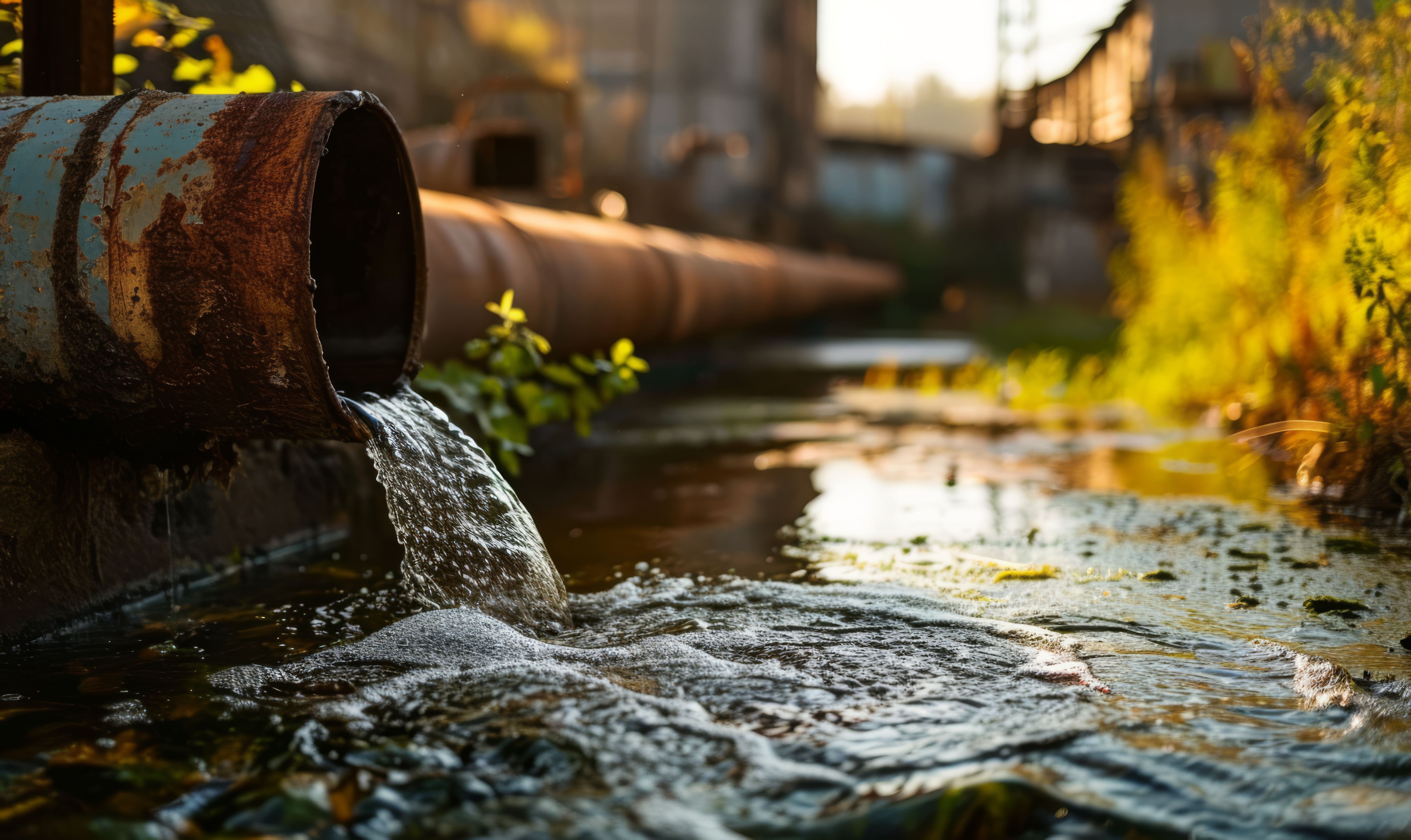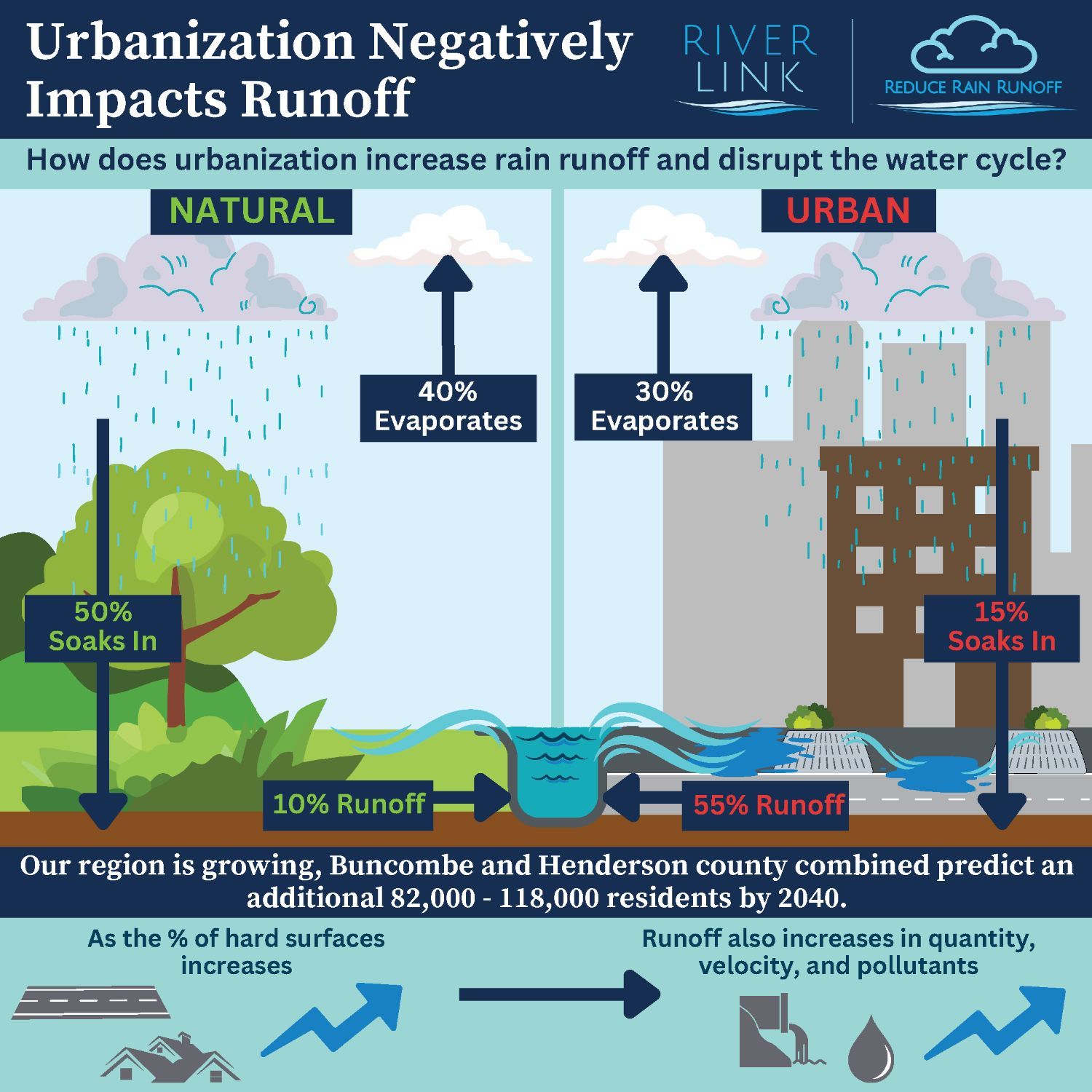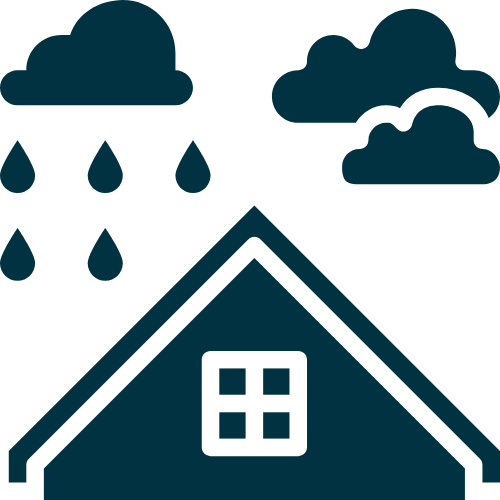|  |  | As more people migrate to urban areas, we are becoming increasingly distant from the watery ecosystems that support us. Across WNC and the world, cities have bulldozed their waterways into submission. The overall impact of the piping, channeling, and hardening of our urban landscapes leads to flash floods, unstable banks, concentrated pollution and waning aquatic life in urban streams. How did we get here, and what can we do about it? |
| We Paved Paradise Urbanization happens when more and more people move to an area, and what was once natural or rural land is transformed for residential, commercial, and transportation purposes. With this development comes more hard surfaces that prevent rainwater from soaking into the ground. |
| The urbanization that comes with growth will increase the negative impacts on water quality and flooding, unless we design and plan for areas where rainwater can soak in, rather than simply heading for the storm drains — and the nearest stream |
| |
|
| Our region’s most populous counties—Buncombe and Henderson—are expected to add an additional 82,000-118,000 residents by 2040. |
|  |
|
|  |  | Nature’s Filter In urban areas, a whopping 55% of rainfall becomes runoff. Urban runoff picks up pollutants as it flows across hard surfaces before emptying into a nearby stream. This large amount of fast moving water creates erosion, sedimentation, and flash flooding. Compare this to undeveloped areas where about 10% of rainfall runs off the landscape and the rest either soaks into the ground or evaporates. Urban planners, engineers, landscape architects, and property owners play a role in managing rainwater in a more natural way that protects our urban streams and communities from the harmful impacts of runoff. |
| |  |
|
|  | Did You Know? The Asheville Mall sheds an astonishing 53 million gallons of water annually from its 2,000,000 square feet of rooftop and asphalt parking area |
| Going Gray vs. Going Green Gray infrastructure is the series of gutters, drains, and pipes that collect runoff in developed environments and send it untreated to the nearest stream. Green infrastructure, in contrast, mimics nature by capturing rainwater where it falls, allowing it to soak into the soil where it is filtered naturally and returned to a spring or creek. Rain gardens—bowl-shaped plantings designed to collect and absorb rainwater—are an example of green infrastructure. Green infrastructure has many co-benefits; for example, rain gardens filled with native plants also provide critical pollinator habitat in urban areas. Learn more about the value of green infrastructure here. |
| |
|
|  |  | Death by 1,000 Cuts: Urban Stream Syndrome A single urban stream can have dozens, even hundreds of stormwater pipes emptying into them, each one delivering large amounts of fast moving runoff during a storm. The common effects of runoff on these streams is called “Urban Stream Syndrome” and include - “Flashy” water levels that rise quickly with even modest amounts of rain
- High levels of pollutants
- Unstable stream banks that erode easily
- Fewer species of aquatic animals
The cure for this syndrome is to reduce the amount of stormwater entering our streams through the use of green infrastructure. Healthy streams also need native woody plants growing on their banks to hold the soil in place and serve as a buffer that filters overland runoff before it reaches the stream. |
| |
|
|  | Making a Difference: Sunny Point Each month, our Stormwater Diaries share stories of WNC locals who are using green infrastructure to make a difference. This month, check out what the West Asheville eatery, Sunny Point, has done to manage excess rain water that used to flood their parking lot. It's a bonus for their garden beds! |
|
|
| Making a Difference: Sunny Point Each month, our Stormwater Diaries share stories of WNC locals who are using green infrastructure to make a difference. This month, check out what West Asheville's Sunny Point restaurant has done to manage excess rain water that used to flood their parking lot. It's a bonus for their garden beds! |
|
|
| |
|
|  | Don’t Run Off: Be a Part of the Solution What can we do about urban runoff? The good news is that our urban areas have naturalized landscapes that allow rain to soak into the ground. Lawns are a great example! We simply need to consider where and how our runoff flows. Rainwater from rooftops, patios, and sidewalks can be directed onto lawns or other vegetated areas to soak in. Harvesting rainwater in rain barrels can reduce runoff and provide free water for outdoor watering needs |
| | | | |
|
| | Thanks for being part of our French Broad River community! |
| RiverLink promotes the environmental and economic vitality
of the French Broad River and its watershed. Please join us with a gift today! |
| |
|
| |
|
|